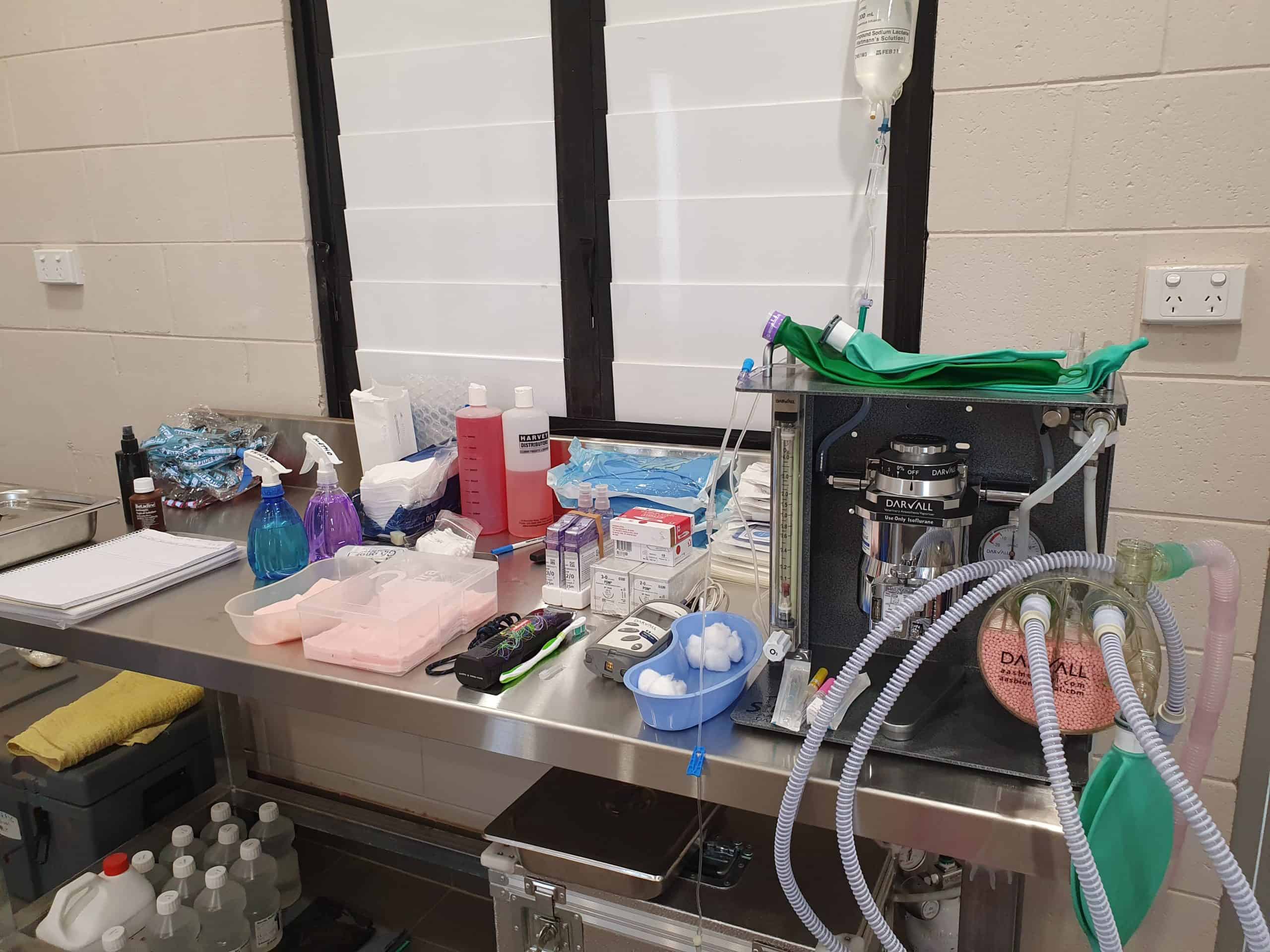
AMRRIC’s Programs team Dr Bonny Cumming, Dr Chelsea Smart and Katrina Doody have been working hard to update AMRRIC’s veterinary program processes and expand our equipment list. This ensures that we are always working towards best possible practice in a remote setting, and considering the most relevant and up-to-date processes available for our veterinary services.
Veterinary medicine and practice is constantly evolving, and all veterinarians must fulfill continuing professional development requirements to ensure their knowledge is current. In this vein, AMRRIC aims to ensure our veterinary treatment protocols are regularly updated and with considerable consultation of the appropriate literature and with our veterinary colleagues. This also ensures that we are fulfilling our requirements under the relevant Veterinary Board (governed by State laws). AMRRIC veterinary teams have the added complexity of working within a unique context; whereby, veterinary equipment must be travelled long distances over bumpy, dusty roads; compacted to fit the regulations of light planes; and, be able to be set up and packed up with ease in highly varied settings. In the past we have relied strongly on the equipment provided by contracted veterinarians. During 2020, the AMRRIC Programs team have expanded our own veterinary equipment pool vastly.
Working together with AAS (Australian Anaesthetic Specialists), we have purchased a purpose built, portable anaesthetic machine. This allows us to provide gaseous anaesthesia to our patients in the field, just as in any veterinary clinic throughout Australia. This machine allows anaesthetised patients to receive a combination of medical oxygen and anaesthetic gas, providing a safe and controlled anaesthetic for the surgical procedures that we perform. It is also hugely beneficial to have pure oxygen available in the field in the event of a first aid emergency. Upgraded anaesthesia monitoring equipment including Pulse Oximetry machines are also now part of our routine surgery procedures. Our expansion has also included purchasing a number of new surgical instrument kits, ultrasonic cleaning machine and an autoclave, enabling the team to maintain and surgically sterilise the instrument packs ready to be used during our program delivery. AMRRIC are also currently developing protocols to streamline and control the sterility procedures surrounding patient preparation and instrument care and reprocessing in the field.
AMRRIC utilises the expertise of a variety of contracted veterinarians, assisted by our veterinary volunteers, to facilitate our veterinary services in remote Indigenous communities. This means that we have varied inputs and workings of veterinary surgical processes in the field. To ensure the highest possible quality of care for all animals treated during AMRRIC programs, the team are also working on a set of protocols applicable to veterinary medicine and surgery, as well as wider animal management, to be used on all AMRRIC programs. The aim of these is not to set any hard-and-fast rules, but rather to act as a guide for partner veterinarians in our unique remote community context, while also ensuring maintenance of a uniform standard of care.
These protocols, combined with our improved equipment pool, and a dedication to further our learning and capacity can ensure we continue to aim for the highest possible standard of practice, within our unique and challenging context of remote, pop-up veterinary clinics.